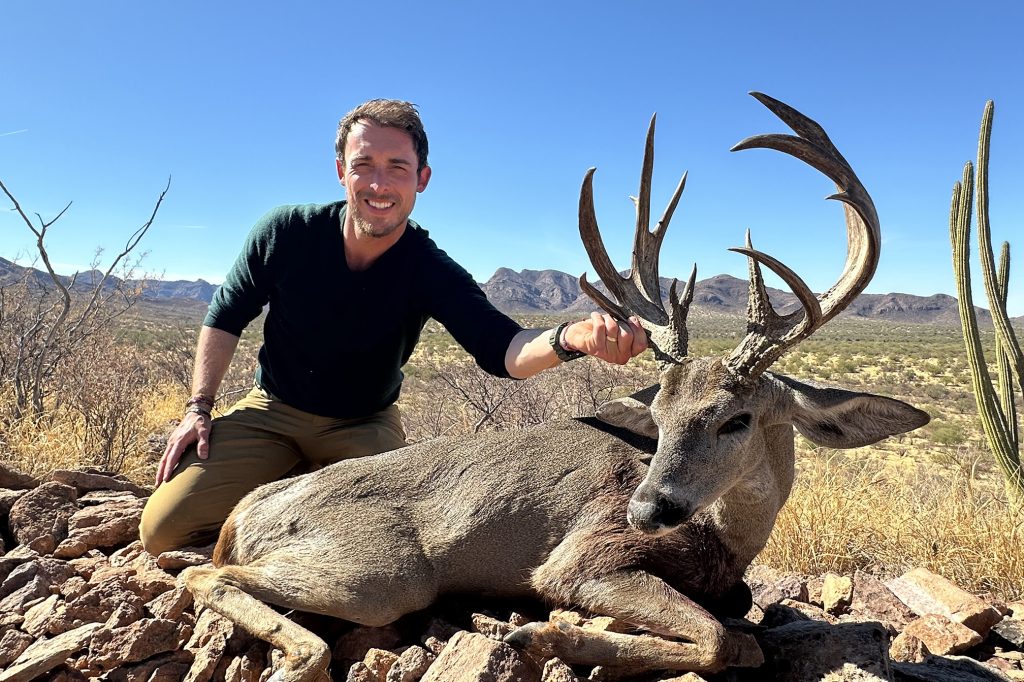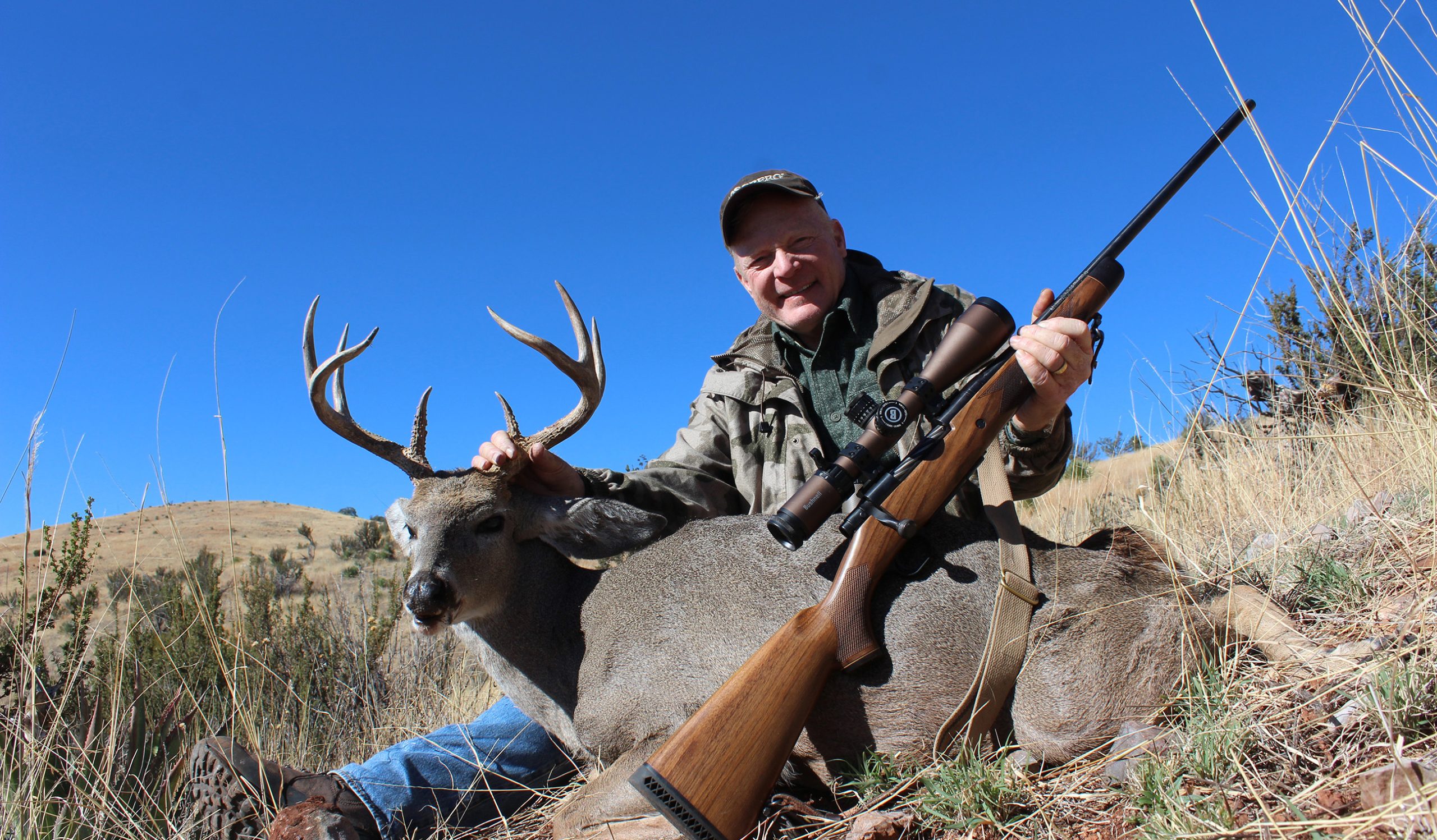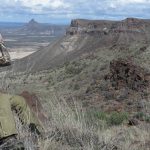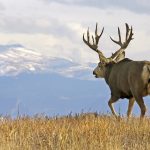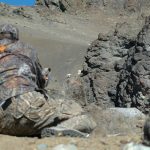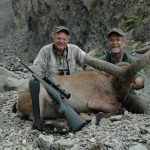These challenging little whitetails are the perfect cure for the winter blues.
Photo above: Taken with Ted Jaycox on Rancho Mababi in northern Sonora, this is a good buck, with a B&C score about 105. A buck like this is a very possible goal; it’s much more difficult to break the B&C typical minimum of 110.
February and March are mostly the doldrums for hunting. There are a few seasons open: It’s the right time for winter cougar and wolf hunts, and also the right time to hunt in the savanna country of Central Africa. There is still some Eurasian mountain hunting open. What else is awesome at this time of year? That’s easy. When it’s cold and icy up north, it’s prime time in northern Mexico.
Seasons for desert bighorn and desert mule deer are open. Both are great hunts, and I’m happy I was able to do them, but they’ve slipped out of my price range. Coues deer hunting remains reasonable, successful, and now is the perfect time. There is good rutting activity through February, and good numbers of quality deer. It’s a challenging and enjoyable hunt, and a wonderful time to enjoy the warm desert sun.
In late winter, northern Mexico is one of the greatest places on Earth, with cool mornings, mild middays, a peaceful and long-forgotten lifestyle on remote ranchos. In gorgeous country, with plenty of deer.
My uncle, Art Popham, hunted Coues deer in Arizona and Mexico in the late 1930s with Jack O’Connor and George Parker, the greatest Coues deer hunter of all time. I didn’t hunt with any of them, but was lucky to know them, and I had Coues whitetail on my bucket list from an early age.
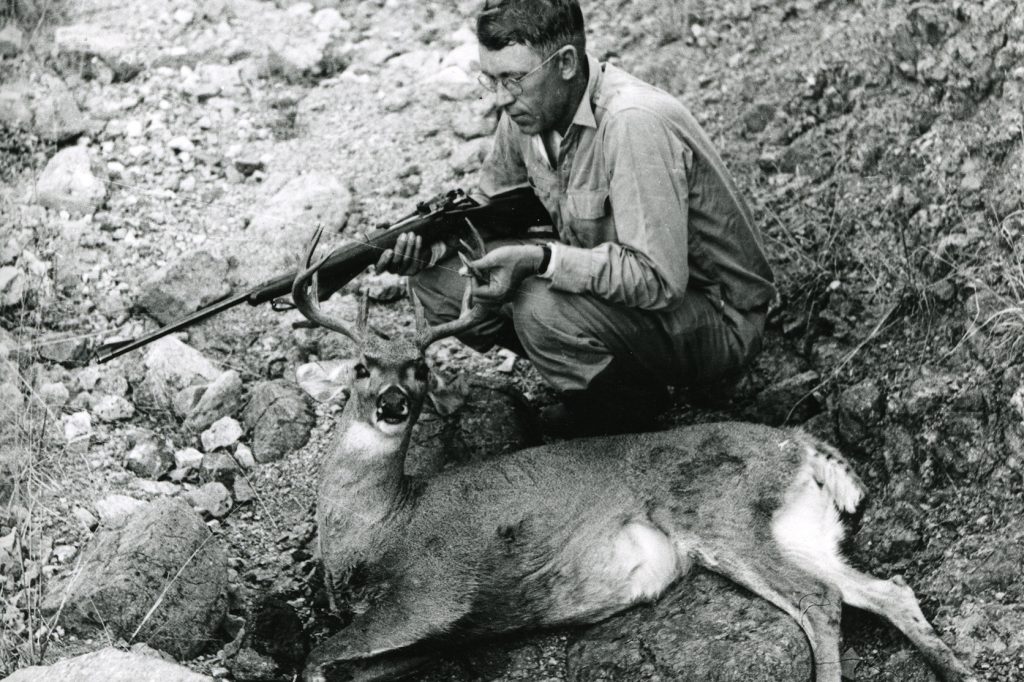
I started in southeast Arizona with Marvin and Warner Glenn, hunting on their famous riding mules. A few years later, Duwane Adams, also a Coues deer legend, took me under his wing. We shot some nice deer. Not easy, but too successful to call it difficult. There were plenty of deer you just needed to know how to look for them. This I learned from Duwane Adams, one of the first to use big binoculars stabilized on tripods.
After a couple of tag rejections in Arizona, I started going to Mexico. I hunted a lot with Kirk Kelso, often with Tucson gunmakers David Miller and Curt Crumm. More recently, in Sonora with Ted Jaycox, and in Arizona on my son-in-law’s ranch. Coues deer hunting in Mexico is wonderfully successful, but so is Arizona. The biggest problem is finding them, because spotting these small deer in their big country is the most difficult post-graduate glassing test I know of.
They’re thin on the ground, but they’re there. Once located, they are generally stalkable. Coues deer are, after all, just a desert subspecies of whitetail, maybe not as wary as their harder-hunted northern cousins. Hunting them is never a slam dunk, and there is never any assurance of a giant. Me being me, I rarely hold out for a giant, usually won’t pass a respectable buck. Just having fun, enjoying a great deer hunt in. wonderful winter weather.
I’ve hunted Sonora the most, also did several Coues deer hunts in Chihuahua. My spin: good country in Sonora generally has more deer, but Chihuahua has some awesome bucks. Perhaps the coolest (literally) Coues deer hunt of all was in Chihuahua, where we were caught by a freak overnight blizzard.
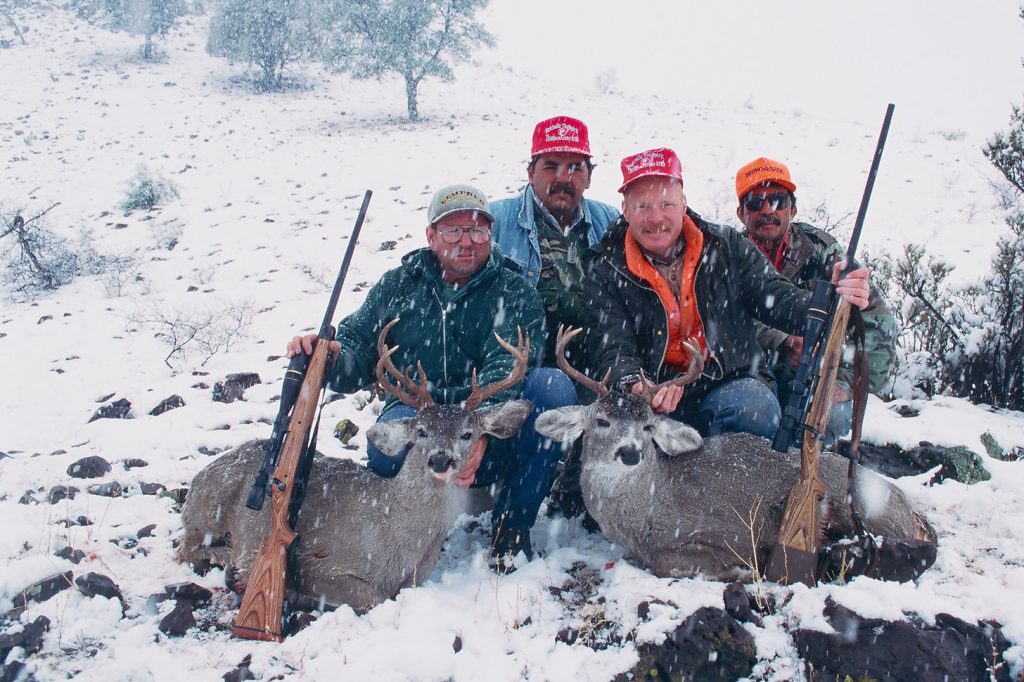
In Arizona, I’ve hunted Coues deer in rain and light snow, but that was the only time I’ve hunted them in deep snow. Maybe I should have been pickier, but time was running short, and I caught an 8-point buck coming down a snowy cut, 400 yards straight below me. I mean straight down. Angle-correcting rangefinders didn’t exist. I shot over him twice, the deer clueless as the bullets thumped into deep snow. Third shot, I aimed at his knee and dumped him.
The Sonoran Desert is so weird to me. I expect to find desert sheep in the hills and mountains. Seems the desert mule deer should also be there. No. Coues whitetails are in the hills, mule deer are on the desert floor. Clearly, it’s a matter of feed and preference, because I’ve never seen a desert mule deer in Sonora up in the hills, and I’ve rarely seen Coues deer down low.
Once, walking across a desert flat, looking for mule deer, my Mexican cowboy-guide and I saw a wide-antlered buck feeding in a bushy tree. My Spanish is limited, my hearing worse. I heard him to be saying, “Shoot.” Hell, he was saying “Coues,” telling me not to shoot. I threw up my Jarrett .30-06 and dumped it, a fine buck. Fortunately, I had permits for both species. My guide didn’t know that, and he expressed much concern at that moment.

Duwane Adams and I took a great Coues buck forty years ago, my first big one. He had a spot on the back side of the Catalinas, only accessed by starting the uphill climb about midnight. I can’t believe I could do that stuff so easily back then. We got into position overlooking a big basin, started glassing, freezing our tails off in the chill dark.
After maybe an hour of shivering, light growing slowly, Adams looked up from his tripoded binoculars and said, excitement in his voice, “Boddington, dump all your shells out on the ground. I got a barn-burner.” And he did.
Fortunately, I only needed one shot. Coues deer are small deer in tough, brushy, thorny country, and they can be some of North America’s most difficult shooting.
I’m off on a Coues deer hunt next week. No idea what might happen, and I don’t really care. B&C’s typical minimum is 110, so I figure 100 is a fine buck. It’s not so hard to find a buck in the 100 to 105 class, but then the air rarifies. I’m not trying to beat any records; I just hope to enjoy some great deer hunting.
A more interesting statistic: In thirty years of hunting Coues deer in Mexico—not every year, but in some years more than once—I have only failed once. That time it was not Sonora’s fault, nor the fault of my friend Kirk Kelso. On the last day, he showed me a nice buck, moving back and forth on a brushy hillside like a whack-a-mole. I found him in the scope, lost him, found him again, couldn’t get a shot off. Embarrassing. That was the only time I’ve failed on Coues deer in northern Mexico, and it was completely my fault.
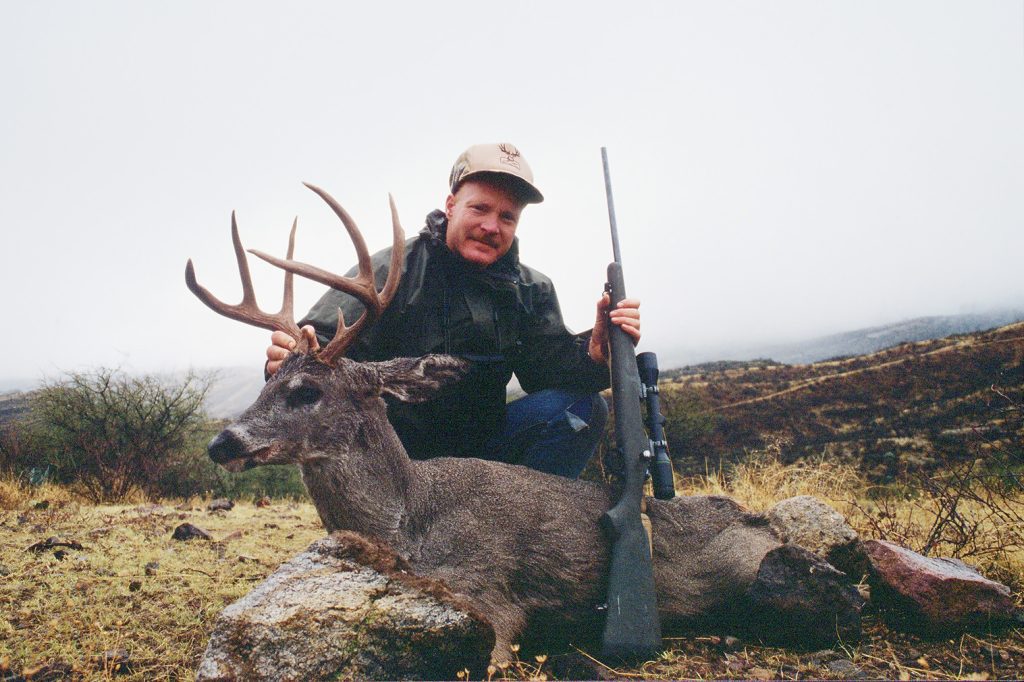
Other than that weird blizzard in Chihuahua, I suppose the most unusual situation I ever had on Coues deer was during a winter rainstorm in Sonora’s Sierra Madre. We were huddled under some thick mesquites while the rain dripped down, just waiting for the storm to pass, when a bachelor group of bucks appeared out of the mist.
It was early in the hunt, and there was no reason to be impatient, but one buck was too nice to ignore, a big 8-pointer with long tines. Good enough, too good to pass. I think that was the closes shot I ever had at a Coues whitetail, not 40 yards. Next week, I don’t expect to get that close. Maybe I’ll see a good buck. If I don’t, it doesn’t matter; it will be good to be back in Coues deer country, one of the great North American hunts I never tire of.
